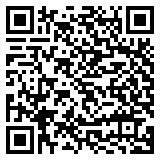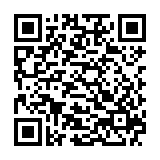In August 2025, the Cambridge Dictionary made headlines, adding over 6,000 new words inspired by TikTok, YouTube, and other online cultures. Among them are “skibidi,” a playful, often nonsensical term for “cool” or “bad”; “delulu,” short for “delusional”; and “tradwife,” describing a social media–active traditionalist spouse. It also added practical terms like “mouse jiggler”, used for simulating computer activity during remote work.This wave of additions spotlights how social media algorithms accelerate slang adoption, turning niche memes into mainstream words overnight. It also has a direct impact on the art of interpreting slang.
Why This Hot Trend Matters to Interpreters
1. Slang Recognition Is No Longer Optional
Interpreters increasingly encounter slang during live events, youth interviews, or social media–driven discussions. Staying current with terms like “skibidi” or “delulu” ensures communication remains both accurate and culturally resonant.
2. Context Is Everything, Even for Nonsense
Though “skibidi” may sound absurd, it carries tone and cultural cues. Interpreters must convey not just meaning, but attitude and intent, to maintain integrity across languages.
3. Cultural Awareness Is Crucial
These words reflect broader shifts in how Gen Z and Gen Alpha communicate online. Interpreters are cultural bridges, and understanding evolving slang ensures they stay relevant and empathetic.
Interpreting Slang: Perfecting the Art
Slang as a Cultural Snapshot
Words like “skibidi” serve less as precise vocabulary and more as cultural shorthand, a wink shared between closely connected online communities. Interpreters should recognize these as signifiers, not errors.
When Literal Translation Fails
Slang often lacks one-to-one equivalence across languages. Interpreters need to adapt creatively, perhaps by capturing the tone or vibe rather than sourcing a direct translation.
The Impact of Algorithmic Culture
Linguist Adam Aleksic’s book Algospeak explores how social media platforms own a substantial role in creating and disseminating slang. Slang isn’t random, it’s engineered to stand out, be shared, and evoke emotion.
Being tuned into these platforms helps interpreters anticipate trending language before it hits the dictionary.
Practical Tips for Interpreters Interpreting Slang Trends
| Strategy | Actionable Steps |
| Stay Curious | Follow creators like Etymology Nerd and watch TikTok, Twitch, or meme content for emerging slang. |
| Curate a Slang Glossary | Capture new slang terms in your memory bank, include definitions, usage examples, and evolving contexts. |
| Bridge the Tone | If a phrase lacks translation, describe its tone, “a playful exclamation” or “tongue-in-cheek slang.” |
| Explain Sparingly | In some scenarios (like interpreting for media), briefly note a term’s usage to preserve clarity. |
| Stay Flexible in Delivery | Be prepared for in-the-moment slang recognition and adaptation, stay agile and confident. |
Why This Is More Than Just Fun Language
Slang may seem playful, but it’s a marker of cultural moment, online expression, and community identity. When dictionaries recognize slang, the language world takes notice, and that includes interpreters.
By embracing linguistic playfulness alongside precision, interpreters can stay effective in a media-saturated, youth-driven linguistic landscape.





0 Comments